The Constitution
This is the student activity 1 of 1 of the Aboriginal rights and freedoms: the 1967 referendum learning activity.
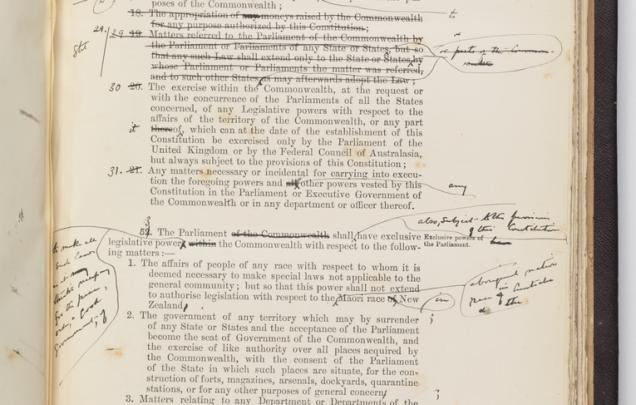
s127
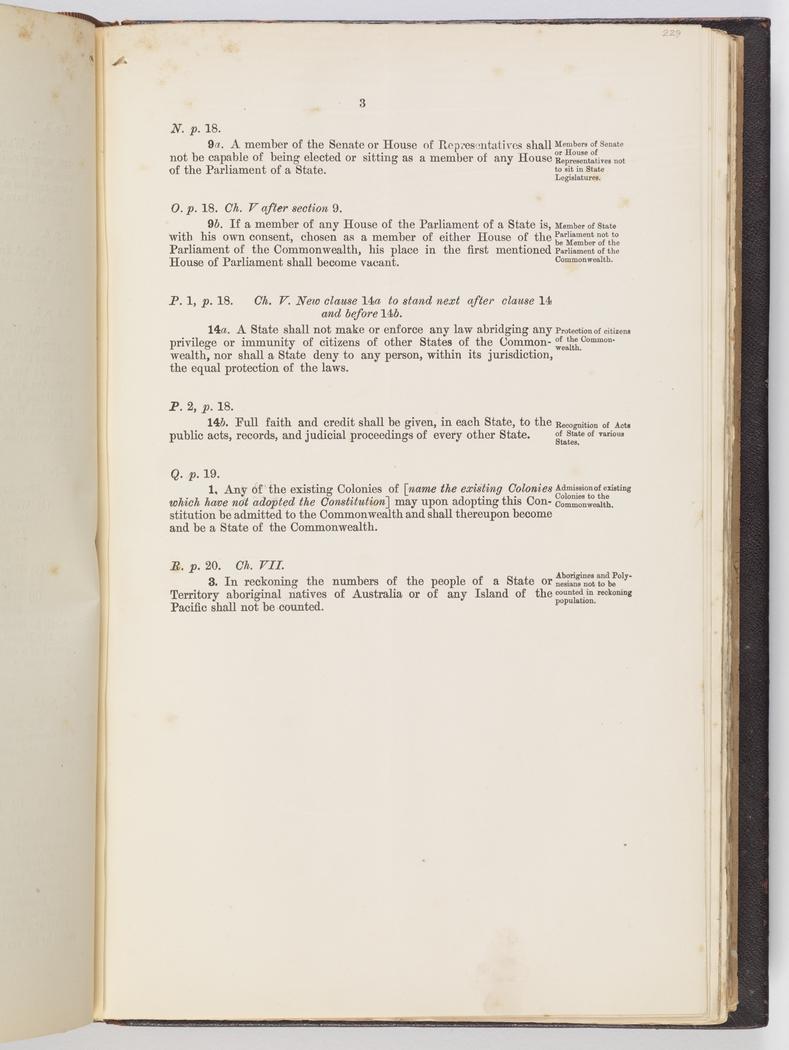
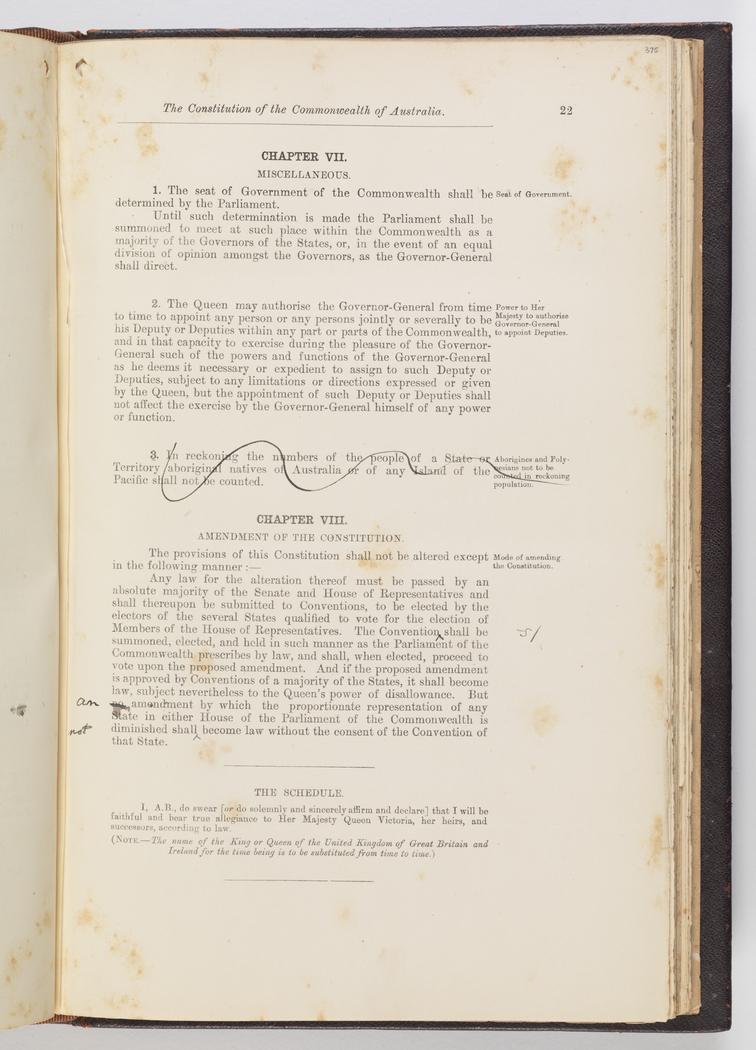
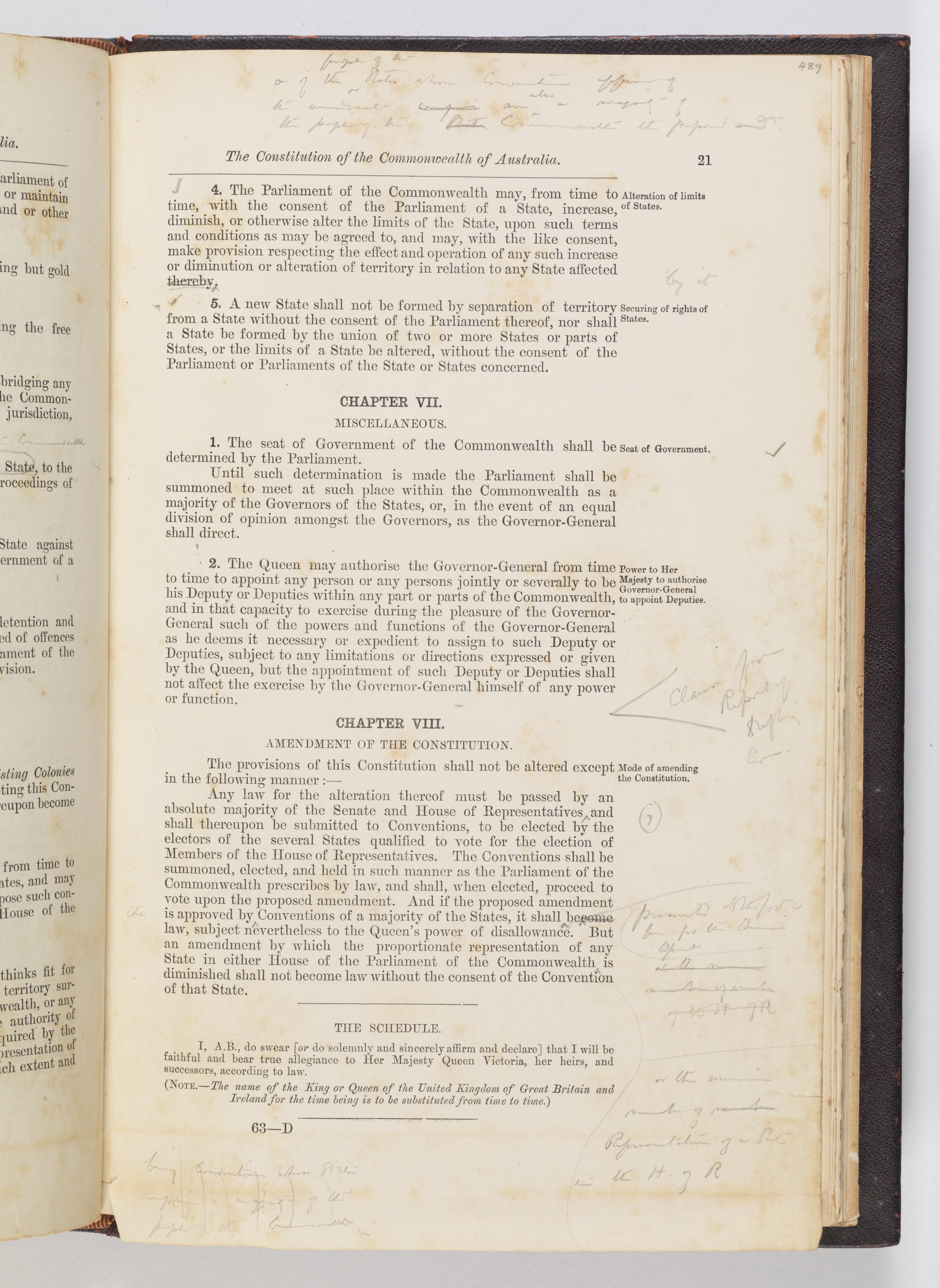
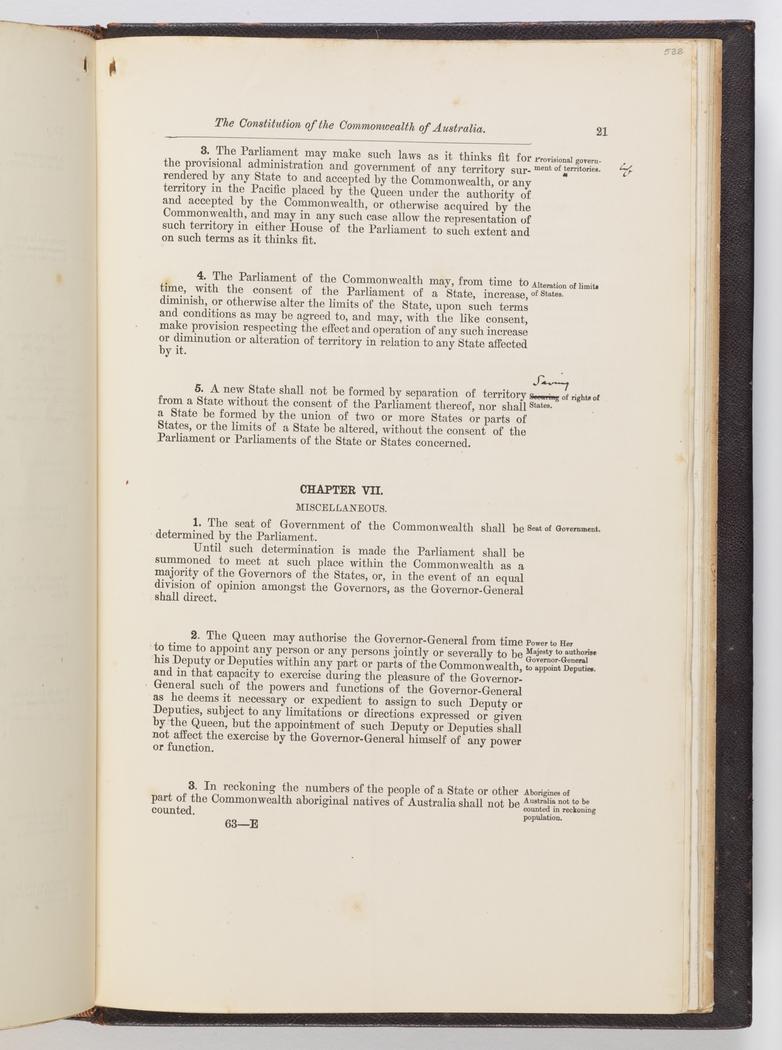
The State Library of NSW holds a collection of printed reports, proofs and edited proofs from the drafting of the Constitution of the Commonwealth of Australia, dating back to the early 1890s. These papers allow us to gain some insight into the way in which the parties involved in this process developed the sections relating to the rights and freedoms of Aboriginal Australians.
Aboriginal people were only mentioned in two sections of the Constitution (and its preamble) and these two sections were to have a significant impact on their rights and freedoms.
Look at the collection items by either clicking on the text, or on the tiles below.
The draft of the text that would become s127 (section 127) first appears in separately printed additions to the Constitution’s proof dated 28 March 1891, (FL446186), stating: In reckoning the numbers of the people of a State or Territory Aboriginal natives of Australia or of any Island of the Pacific shall not be counted. This statement appears within the body of the Constitution on 30 March (FL446226). However, in a later proof, also dated 30 March, we see it crossed out entirely (FL446304). It is absent from the proofs printed and edited afterwards until 1 to 8 April (FL446428), when further changes are indicated by a handwritten note in the margin of the page where the text previously appeared. In the proof printed immediately afterwards, the text reappears (FL446459), written exactly as it appears in the Constitution when it came into power on 1 January 1901:
In reckoning the numbers of the people of the Commonwealth, or of a State or other part of the Commonwealth, aboriginal natives shall not be counted
Answer the following questions:
- What did s127, as it stood on 1 January 1901, mean for Aboriginal people?
- What might the process of drafting tell us?
- Section 24 mandates that each state is entitled to members in the House of Representatives based on a population quota determined from the “latest statistics of the Commonwealth”. How might this mandate interact with the provisions of s127?
As a result of the referenda of 1967, s127 was repealed in its entirety.
s51
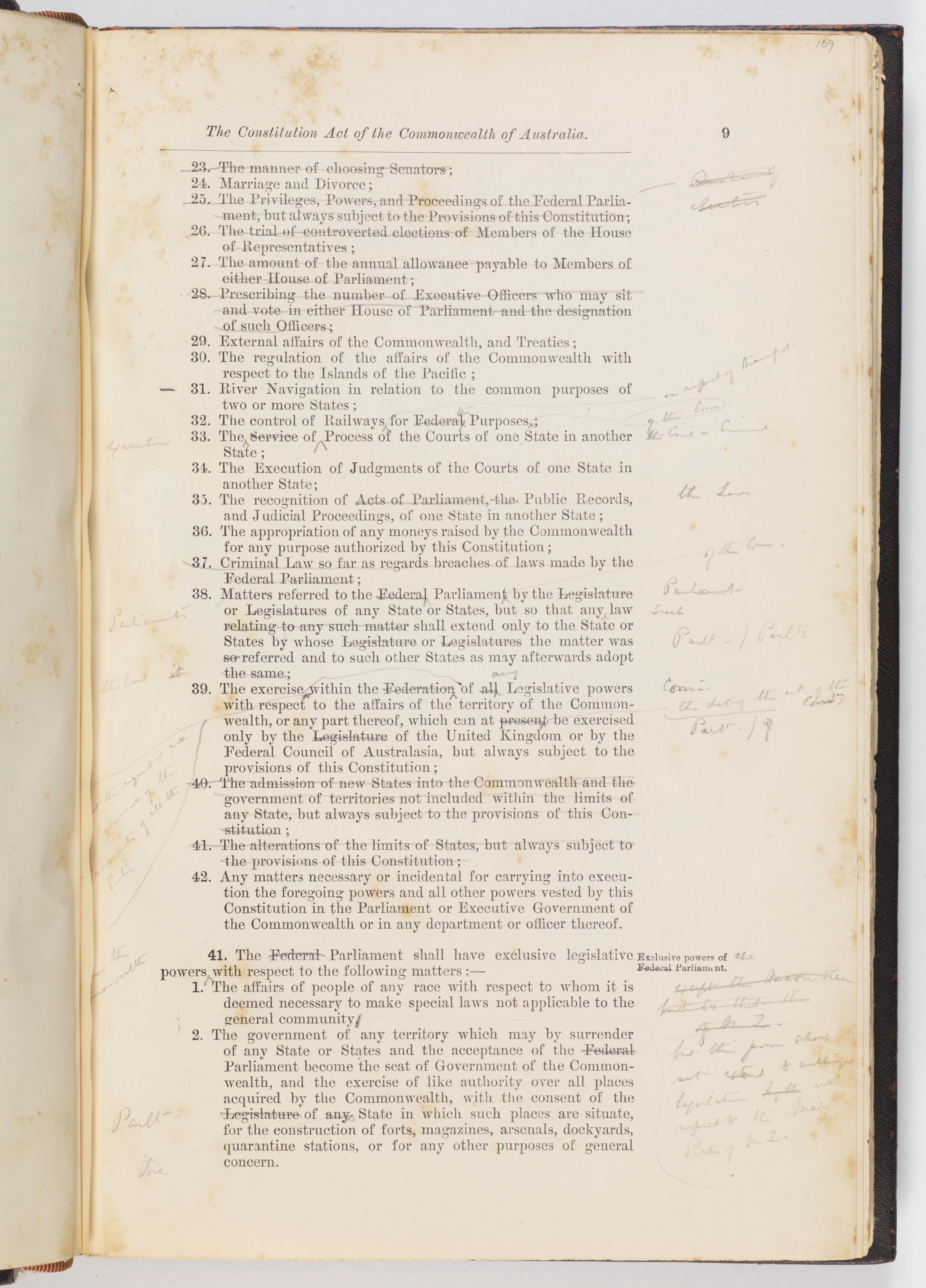
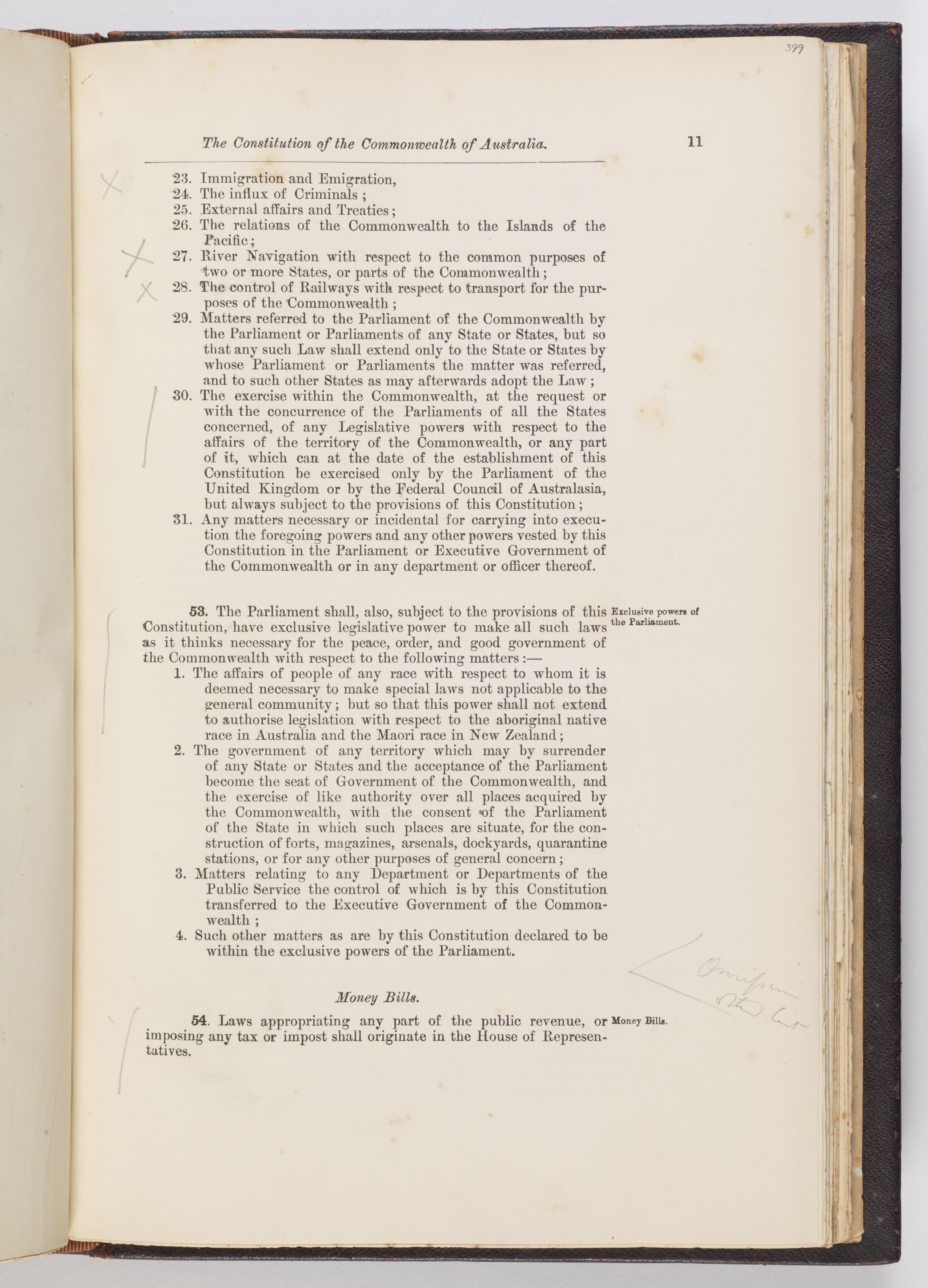
Look at the collection items below by either clicking on the text, or on the tiles below.
The draft of the text that would become s51 (section 51) is first mentioned in proofs dated 28 March 1891 (FL446130). This early drafting, however, made no explicit reference to Aboriginal people. After the inclusion of specific reference to the Maori people of New Zealand (which can be seen in proofs dated 30 March), the first reference to Aboriginal people specifically is made in handwritten notes on a proof dated 30 March (FL446284). These edits appeared in the printed text on 31 March (FL446322).
When constitution came into power on 1 January 1901, s51 stated:
The Parliament shall, subject to this Constitution, have power to make laws for the peace, order, and good government of the Commonwealth with respect to:- …(xxvi.) The people of any race, other than the aboriginal race in any State, for whom it is deemed necessary to make special laws…
Answer the following questions:
- What did s51, as it stood on 1 January 1901, mean for Aboriginal people?
- What might the process of drafting tell us?
- The changes to the constitution that came about as a result of the referenda in 1967 included the removal of the clause within this section, “Other than the Aboriginal race in any State”. What was the effect of the removal of this clause, for Aboriginal people?
Extension Activity - Investigating the Northern Territory Intervention
The removal of the clause that prevented the Commonwealth or Federal government from making laws for Aboriginal Australians (s51, discussed above) was to having a lasting impact on the Rights and Freedoms of Aboriginal Australians. In regards to the Northern Territory, whilst the removal of the clause relating to Aboriginal people from s51 enabled the federal government to pass the (Northern Territory) Land Rights Act, which was of benefit to many Aboriginal Australians, this same change to the Constitution also enabled the Commonwealth Government, in 2007, to suspend the Racial Discrimination Act 1976 in regards to Aboriginal Australians in the Northern Territory, and put in place the Northern Territory Intervention (or Northern Territory Emergency Response).
Investigate further the implications of the 1967 Referendum for the Rights and Freedoms of Aboriginal Australians.